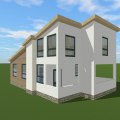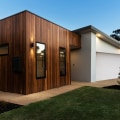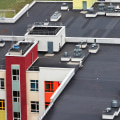Metal roofs are by far one of the best options you can make for your overall roof. They are the most energy efficient roof for residential installations, can last more than 50 years and require very little maintenance. Metal roofs are highly reflective, which is why they get so warm to the touch. Energy-efficient roofs, or “cold roofs,” involve exterior materials, such as what happens on the outside of a building, as well as interior components such as insulation and ventilation.
Without even touching the ceiling, you can reduce your energy costs by insulating your home by up to 10 percent. Insulation works twice to improve the energy efficiency of buildings. Following the example of exterior materials, roof covering insulation prevents outside temperatures from penetrating the attic space. Insulation also prevents expensive air conditioner or heater from leaking out of your home, further reducing the need to keep the HVAC system turned on. Depending on the scale of the project and the insulation material used, prices can range from a few hundred to a few thousand dollars.
If you want to reduce your energy bills without having to pay for a new roof, insulation is a cost-effective starting point. In the case of sloped roofs, the bright white color could be said to compromise curb appeal in most cases, so cold roof coverings are better suited to low-sloped roofs. Metal roofs come in many forms (panels, shingles, beams), substrates (steel, aluminum, copper), and colors to suit both residential and commercial buildings, but one aspect is almost certain: energy savings. Lighter colors and the installation of ventilated metal roofs can result in energy savings of up to 25 percent. Beyond its energy-saving capabilities, metal has earned a reputation as one of the most sustainable roofing materials thanks to the industry's recycling efforts.
Many manufacturers are even including recycled material in their new metal roofing products. Tile roofs promote energy efficiency, mainly because of the nature of their installation, which researchers say can reduce annual air conditioning costs by up to 20 percent in the intense heat of Southern California. As the shingles overlap each row, channels form above the roof covering that allow air to circulate. These air channels function as another layer of insulation and as a way for warm air to circulate before it enters the building envelope. From the point of view of energy efficiency, green roofs absorb solar radiation and provide insulation, making the building more comfortable. A study found a reduction in air conditioning demand by more than 75 percent for a building with a green roof. Today, there are more energy efficient materials available to the average homeowner than ever before.
According to most homeowners and experts in the field, a metal roof is the best material for an energy efficient roof. On the other hand, some of the other energy efficient materials discussed above also provide adequate protective and energy efficient qualities. In this post, we'll look at the most energy efficient roof materials and designs you can choose for your new construction. In addition, we'll give you some tips on ways you can make your current roof more energy efficient.
Do you want to know what is the best roofing material? So, metal roofs are the clear winners. They're cool, they last longer than most roofs, and they're quite lightweight, reducing the strain on your home structure. In addition, they also have excellent energy efficiency ratings due to the fantastic insulating properties of the metal. With tile roofs, because air can easily circulate underneath the shingles, it won't trap excessive heat, which in turn can reduce the cost of cooling.
Because tile roofs can absorb moisture and reflect sunlight better than most materials, they are ideal for dry climates. Slate shingles are resistant to extreme weather conditions, to putrefaction and to fire damage. These types of roofs also last more than a century and can even outlast your home. Slate shingles are made from 100 percent natural rock and can easily last twice as long as other types of roofs.
In addition, green roofs provide an open rooftop space where you can enjoy the garden and rooftop greenery. However, keep in mind that this type of roof is more expensive than traditional roofs.
Metal roofs
, which are certified as an energy efficient roofing material, are an excellent choice for roofing. It's available in a range of prices, which suits different budgets, and is easy to install.Metal is durable, energy efficient, and needs less maintenance than asphalt and vibration. You can select metal panels or metal tiles. The panels are large roof sheets and the metal shingles are designed to look like slate or shook or other roofing styles. Depending on the type of roofing material you choose, your roof can only pay for itself in as little as 5 to 10 years.
Your choice of roofing materials can also depend on where you live and the weather conditions your roof is subjected to, so it's always a good idea to have a professional perform a home energy audit. Whether a roofing material meets the definition of energy efficiency depends on who is being asked and the slope of the roof. A cold roof works with existing roofing materials by applying special reflective coatings that are generally white in color. If you live in a warm climate and your current roof still has enough lifespan, a cold roof coating saves you the hassle of having to replace it directly while reducing cooling costs by up to 30 percent.
Although metal is quite expensive and requires professional installation, it is one of the best options for an energy-saving roof. Although the cost of materials is expensive, metal roofs can be installed fairly quickly, saving money on installations. Metal roofs have other advantages such as fire resistance, reflectivity (which reduces cooling costs), lightness and longevity.



